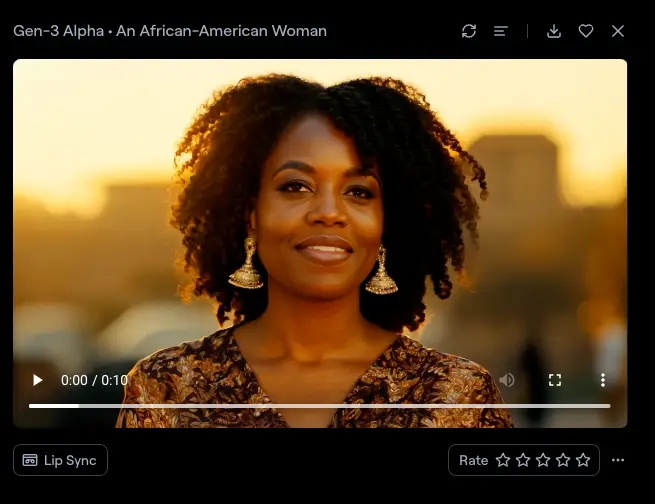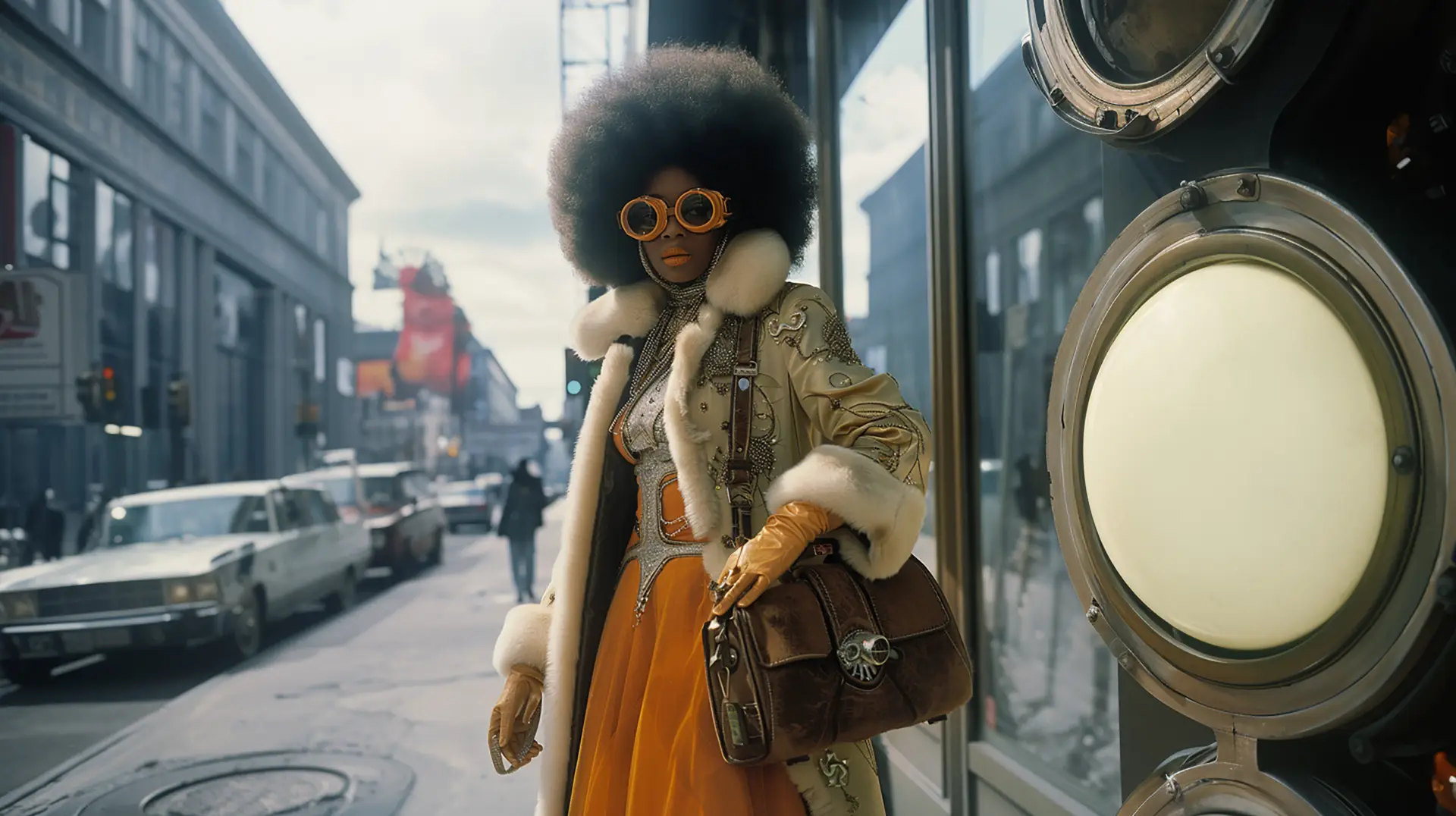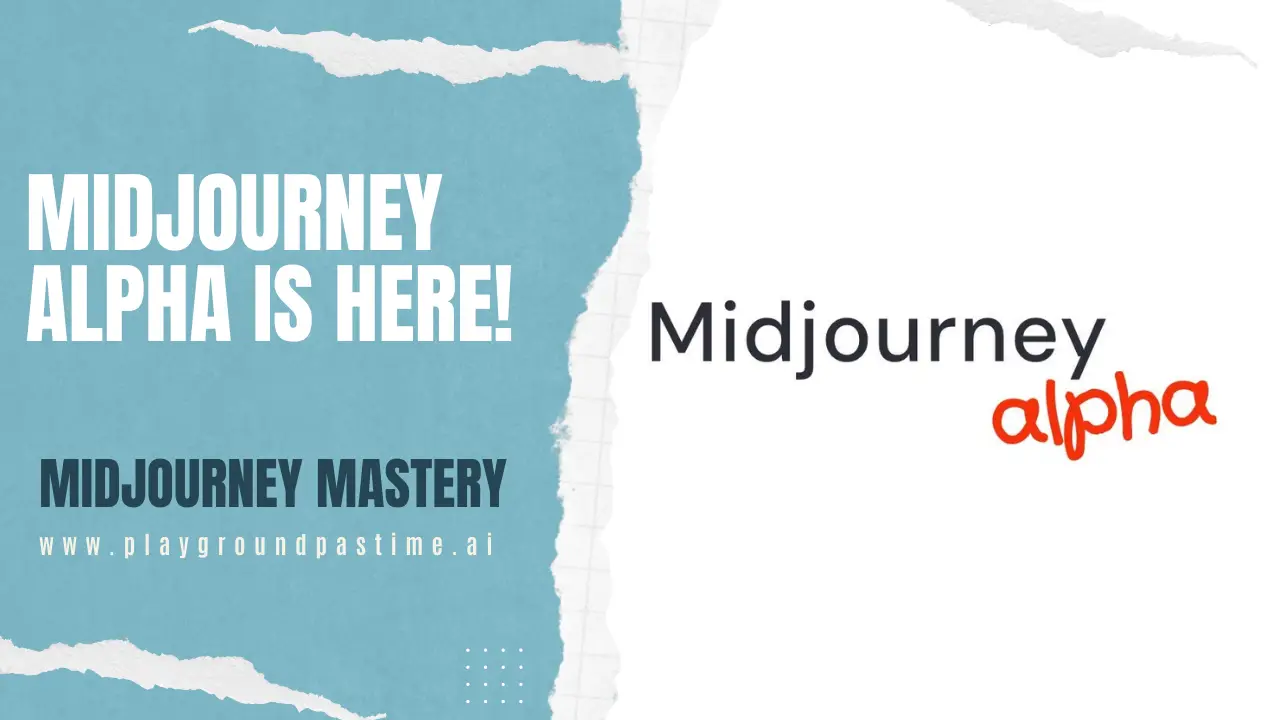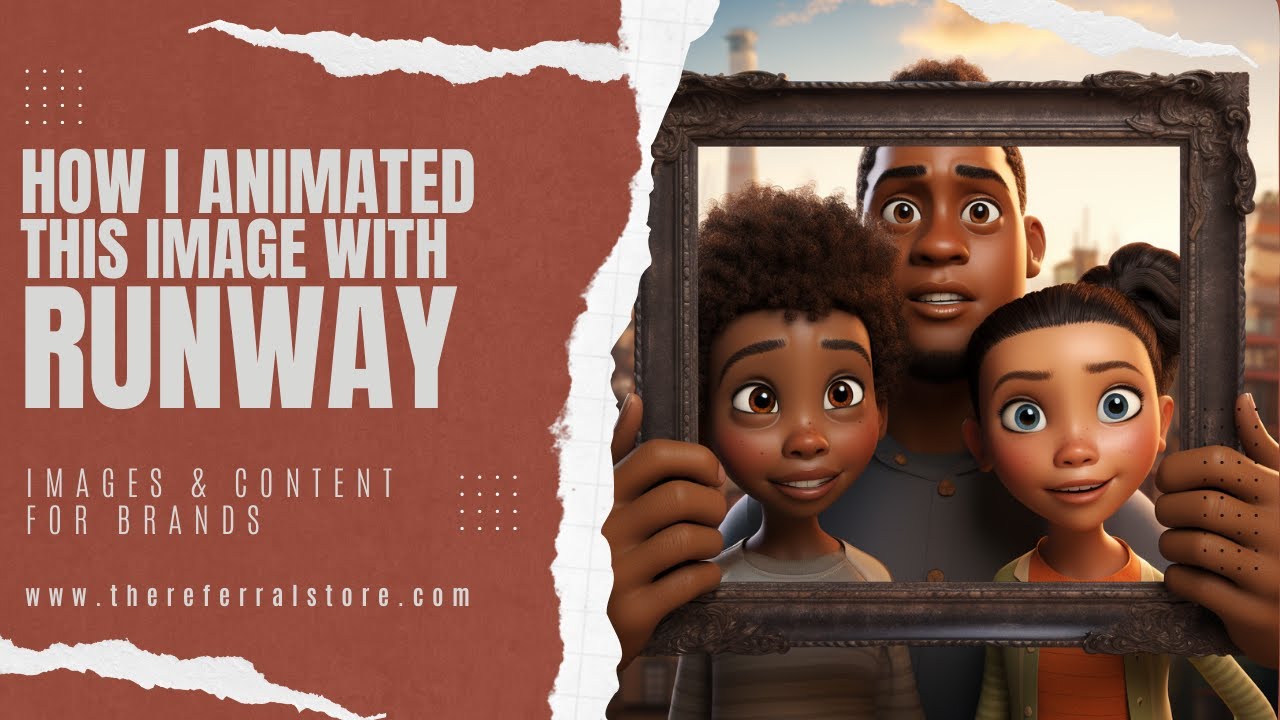Meanwhile, I was Burning all My Credits on Incorrect Images!
As an African-American creator, I’ve often encountered many hurdles and frustrating late-night hours generating images that made me hit DELETE. Producing accurate and representative images of people of color can be pretty tricky at times. My recent session on Runway GEN 3 was a prime example of this struggle. Here is how my night went…
Normally, I am an “image-to-video” creator. That is, I produce images in Midjourney and then take them to Runway for my video. However, with Runway’s new long-form video GEN3, I can only create text-to-video, so I decided to try it out. My prompt was straightforward:
“a candid wide point of view shot, retro-futuristic Black woman wearing a black retro-futuristic space suit.”
I will admit this prompt is not the typical prompt for a long-form video.
To my disappointment, the AI-generated a video of a woman who looked more Latino than Black.
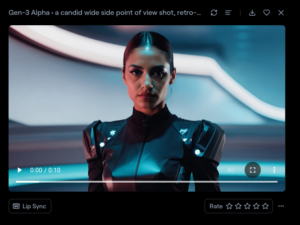
Thinking that the wording of my prompt might be confusing to the AI, I tried again with a more specific description:
“a candid wide point of view shot, retro-futuristic African-American woman wearing a black retro-futuristic space suit.”
This time, the result was even less representative of a woman of color.
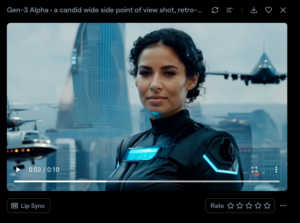
Frustrated but determined, I refined my prompt further:
“A retro-futuristic African-American woman wearing a black retro-futuristic space suit.”
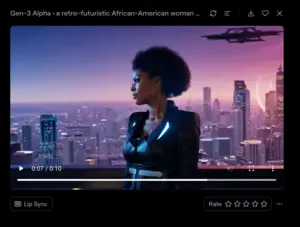
Simultaneously, I ran a watered down, simple prompt:
“An African-American woman.”
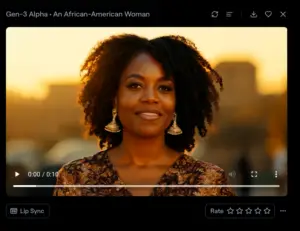
The last videos generated pretty good videos, but the journey to get there was revealing.
These attempts underscored a significant issue: AI bias. The technology we use to create and explore new artistic realms still carries the biases of its training data. Generating accurate images of people of color often requires more manipulation and specificity in prompts. This experience highlighted the importance of diversity in AI development and the need for people of color to actively participate in generating and training AI to ensure it reflects our true diversity.
Five Ways We Can Be Proactive
Here are five ways users of AI image and video-generating tools can assist in training AI tools and addressing AI bias:
- Provide Diverse Training Data: Contribute or support the inclusion of diverse datasets representing various ethnicities, genders, and cultural backgrounds.
- Use Specific and Inclusive Prompts: When generating images or videos, use detailed and inclusive language to help the AI understand and produce more accurate representations.
- Report Biases and Inaccuracies: Actively report any biased outputs or inaccuracies you encounter to the developers of the AI tools to help them improve the algorithms.
- Support Inclusive AI Initiatives: Engage with and support organizations and projects that reduce AI bias and promote diversity in AI development.
- Educate and Advocate: Spread awareness about AI bias and the importance of diversity in AI. Encourage others to use inclusive practices and support policy changes that address these issues.
People of color must engage in the creation and training of AI systems. Our participation helps ensure that the images and representations generated are accurate and inclusive. Representation and visibility in a world increasingly influenced by AI is critical.
My experience on Runway GEN3 is not unusual for AI tools. I will still use the tool. I LOVE Runway. But I also realize that my usage is necessary to training this and other AI tools. It is a stark reminder of the work that still needs to be done. As creators, we are responsible for pushing for inclusivity and representation in the tools we use. By sharing our experiences and advocating for change, we can help shape a more equitable AI landscape. Let’s continue creating, challenging biases, and ensuring everyone is seen and represented in AI-generated imagery.
Follow me on Social Media to view the images of Playground Pastime:
- Instagram: Follow me @PlaygroundPastime
- TikTok: Watch behind-the-scenes videos and reels on @kimberlyofford.
- Website: Visit www.playgroundpastime.ai to browse my gallery and shop for prints.
- Medium: To read more on AI Bias follow me on Medium: Kimberly Offord
